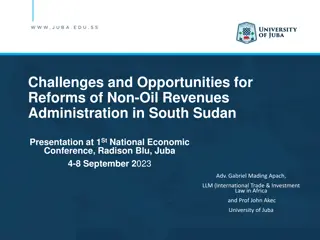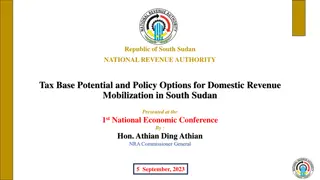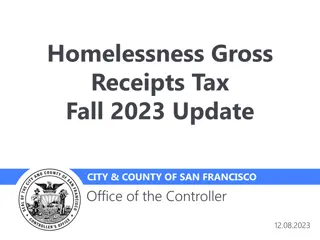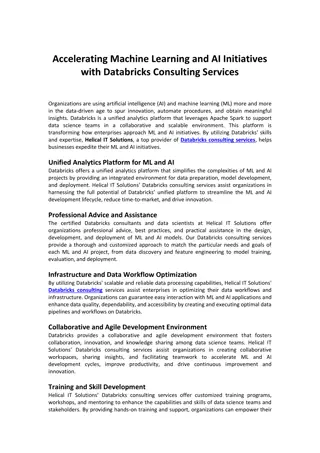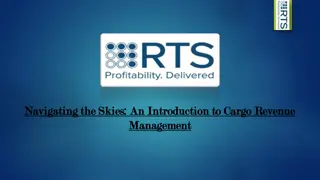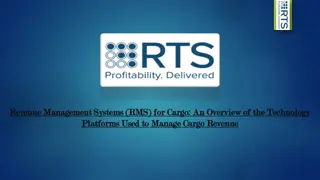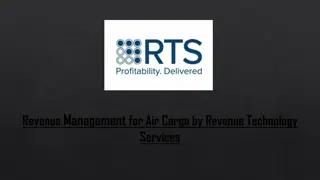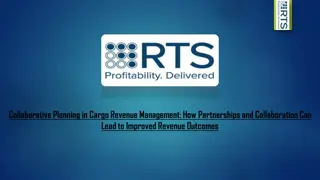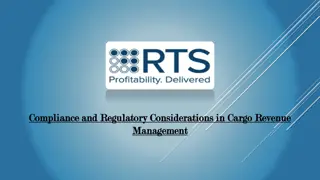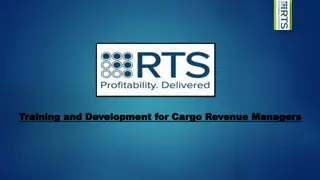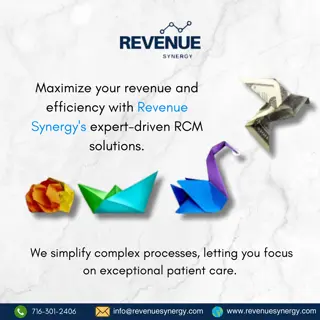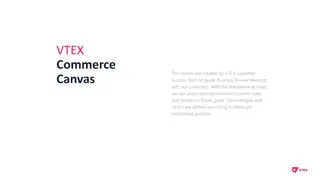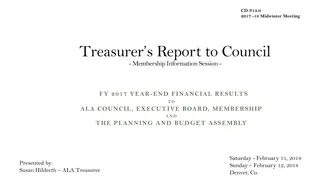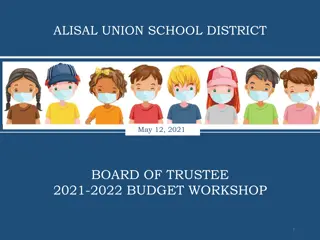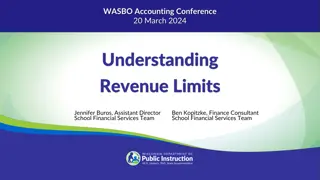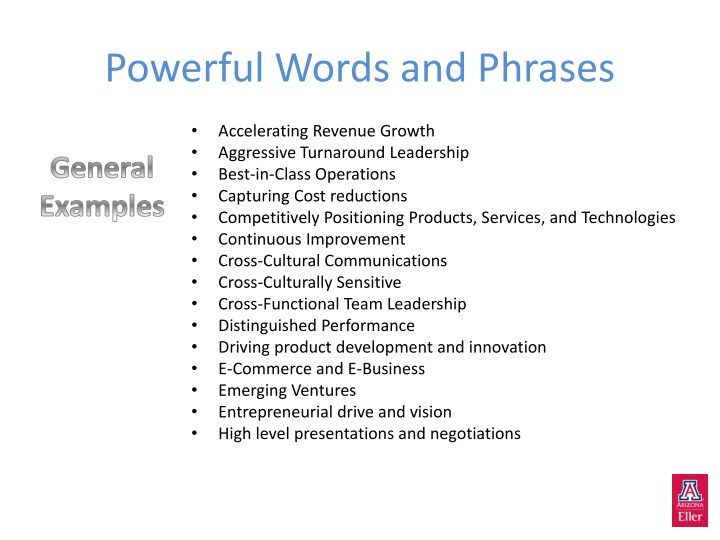
Accelerating Revenue Growth and Leadership in Global Business Development
Accelerate revenue growth through aggressive turnaround leadership and best-in-class operations. Drive product development, innovation, and performance while positioning products competitively. Excel in cross-functional team leadership and continuous improvement. Proactively lead high-performance international business expansion and strategic alliance negotiations. Optimize processes, drive cost reductions, and outperform global competition. Showcase distinguished performance in e-commerce, emerging ventures, and entrepreneurial vision. Master skills in action verbs to achieve organizational success through effective communication, innovation, and problem-solving.
Download Presentation

Please find below an Image/Link to download the presentation.
The content on the website is provided AS IS for your information and personal use only. It may not be sold, licensed, or shared on other websites without obtaining consent from the author. If you encounter any issues during the download, it is possible that the publisher has removed the file from their server.
You are allowed to download the files provided on this website for personal or commercial use, subject to the condition that they are used lawfully. All files are the property of their respective owners.
The content on the website is provided AS IS for your information and personal use only. It may not be sold, licensed, or shared on other websites without obtaining consent from the author.
E N D
Presentation Transcript
Powerful Words and Phrases Accelerating Revenue Growth Aggressive Turnaround Leadership Best-in-Class Operations Capturing Cost reductions Competitively Positioning Products, Services, and Technologies Continuous Improvement Cross-Cultural Communications Cross-Culturally Sensitive Cross-Functional Team Leadership Distinguished Performance Driving product development and innovation E-Commerce and E-Business Emerging Ventures Entrepreneurial drive and vision High level presentations and negotiations General Examples
Powerful Words and Phrases Fast Tracker Global Business Development High-Performance International Business Expansion Matrix Management Mergers and Acquisitions Negotiating strategic alliance Organizational leadership Outperforming global competition Outsourcing operations Partnerships and joint ventures Performance revitalization Proactive change agent or change catalyst Process redesign and optimization General Examples
Skill Action Verbs Achieved Acquired Acted Adapted Addressed Adjusted Administered Advised Analyzed Anticipated Applied Arbitrated Ascertained Assembled Assessed Attained Audited Arranged Budgeted Built Calculated Charted Checked Classified Coached Communicated Compared Compiled Completed Composed Computed Conceptualized Conducted Consolidated Constructed Conserved Controlled Coordinated Copied Counseled Created Dealt Decided Defined Delegated Delivered Designed Detailed Detected Determined Devised Diagnosed Directed Discovered Dispensed Displayed Disproved Dissected Distributed Diverted Dramatized Drew Edited Eliminated Encouraged Enlisted Enforced Established Estimated Evaluated Examined Explained Expanded Experimented Expressed Filed Financed Followed Formulated Founded Gathered Generated Guided Handled Hypothesized Identified Illustrated Imagined Implemented Improved Improvised Increased Influenced Informed Initiated Innovated Inspected Inspired Installed Instituted Integrated Interpreted Interviewed Intuited Invented Inventoried Investigated Judged Lectured Lead Dispensed Learned Lifted Listened Logged Maintained Managed Manipulated Mediated Memorized Mentored Modeled Monitored Motivated Navigated Negotiated Obtained Offered Operated Ordered Organized Originated Oversaw Painted Perceived Performed Persuaded Photographed Piloted Planned Played Predicted Prepared Prescribed Presented Printed Problem-solved Processed Produced Programmed Projected Collected Developed Extracted Instructed Observed Promoted
More Skill Action Verbs Proof-read Related Served Team-built Protected Remembered Shaped Tended Provided Rendered Shared Tested Publicized Renegotiated Showed Trained Purchased Repaired Sketched Transcribed Questioned Reported Solved Translated Raised Represented Sorted Treated Realized Researched Spoke Traveled Reasoned Resolved Stimulated Tutored Received Responded Studied Umpired Reconciled Restored Summarized Understudied Recommended Retrieved Supervised Undertook Recorded Reviewed Supplied Unified Recruited Risked Symbolized United Reduced Scheduled Synthesized Upgraded Re-evaluated Selected Systematized Utilized Referred Sensed Talked Verbalized Rehabilitate Separated Taught Wrote
General Management Industry Jargon Acquisition, Merger, Alliance and Divestiture Analyze Profit & Loss (P&L) Articulate vision and mission Assessing Win Probability Capture Centralized Services Commercial Staffing Customer Relationship Management (CRM) Develop Operational Policies Distribution Channels Due Diligence Fair and equitable terms General Administration Global eCommerce Identify business opportunities and threats Implementation Information Acquisition Interact Effectively with High- Level External Clients Lead Tracking Systems Make Strategic and Tactical Recommendations Manage individuals and teams Product Implementation, Deployment and Support Product roadmap Project Management Outsourcing Raise Capital Recruitment Process Requests for Proposal (RFP) Sales Analysis Six Sigma experience Strategic Outreach Value stream mapping Value-added configurations
Information Technology Industry Jargon Business Process Analyst Channel Development Cloud Computing Comprehensive Outsourcing Control Systems Enterprise Risk Management (ERM) Implementation Microstrategy Reporting Operations Risk Management (ORM) Oracle Meter Data Management Personal Energy Management Product Development and Enhancement Product Strategy Sales Strategy Software-as-a-Service (SAAS) Tiny Web Services Vendor Management
MarketingIndustry Jargon Brand architecture Brand equity Brand franchise Brand Management Brand orientation Campaign theme Category leadership Company Image Consumer Attitudes Consumer insight Consumer Packaged Goods (CGP) Customer experience Growth initiatives Inventory strategies Margin Management Market penetration Market share objectives Marketing Programs Positioning & Repositioning Predictive analytics Price elasticity Pricing Product Benefit Product lifecycles Product Roadmap Promotion strategies Proprietary research Sales volume/spending projection SKU assortment Target Market Trade merchandising Trade Programs Trends, Opportunities, Risks Vendor Visual brand language Visual merchandising
Marketing Research Industry Jargon Advertising Brand Equity Brand Extension Brand management Brand Preference Brand Recognition Break-even Analysis Building intuition Business and portfolio strategy Cannibalizing Cause Marketing Competitive issues Concept Testing Consumer empathy Consumer home observational studies Consumer household purchasing Consumer promotions Consumer research projects Cross-functional teams Customer needs Customer Research Elasticity Equity building advertising Evaluation Everyday Low Pricing (EDLP) Focus Group Interview Forecasting Guerrilla Marketing Idea stage Inception In-market effect Insight and analytics Line Extension Loss Leader Market and promotional trends Market potential Market Segmentation Marketing and sales Multi-Channel Marketer New product introductions Online Marketing Penetration Pricing Strategy Point-of-Purchase Advertising Portfolio management Pricing strategies Primary and secondary marketing Product placement Product Positioning Proprietary pricing models Pushing/Pulling Strategy Relationship Marketing Research techniques Retailer support Skimming Pricing Strategy Strategic direction Strategy and innovation Syndicated store Target Market Valuation plans Value Chains Viral Marketing
Accounting Industry Jargon Activity-based costing Audit Audit trail Budgeting Business modeling CAPM Cash flow modeling Compliance controls Corporate budget Cost allocation models Cost management Data warehousing Decision analytics Due diligence Enterprise/reference data management ERP Financial accounting and reporting Financial controls Financial operations management Finished goods Forecasting GAAP General ledger IFRS Internal audit Inventory Journal entries Monthly ledger close Process improvements Property/portfolio modeling Raw materials Real estate appraisal Reconciliation Reinsurance accounting Risk management ROI reviews Sarbanes-Oxley Statutory reporting Tax risk management Transaction support Valuation Value driver Variance analysis WIP
Consulting Industry Jargon Account Management Strategies Activity-based costing Ad hoc analysis As-is and to-be modeling Benchmark analysis Budget formulation Business intelligence Business transformation Cash management Change management Continuous improvement Cost engineering Crisis response Decision support systems Develop business insight Development lifecycle Engagement Enterprise Resource Planning (ERP) Enterprise transformation Industry research Inventory optimization Knowledge management Leading-edge metrics Outsourcing Performance metrics Process improvement Process model Project management Project pipeline Risk management Sequence diagrams Six Sigma Spend analyses Strategic sourcing Super users Supplier scorecard Tactical marketing Technical architecture UML schema Use cases Value chain
Finance Industry Jargon Earnings Per Share (EPS) EBITDA Efficiency Rations emerging markets Equity Capital Markets Equity Research Equity Sales Equity Trading Financial Accounting Standards Board (FASB) Financial projections Financial Securities data (TFSD) Fixed Income Research Fixed Income Sales Fixed Income Trading High-yield debt (aka Junk Bonds) Inside market vs. outside market Investment banks sell securities (debt and equity) IPO League tables Leverage Ratio Leveraged buyout (LBO) LIBOR Annual Report 10k Block trades Bloomberg machine brokerage buy-side firm Chapter 11 Chapter 7 Chartered Financial Analyst (CFA) Collateralized Debt Obligation Commercial bank Commodities Comparable company analysis (Comps) Consumer Price Index (CPI) Corporate Finance (debt) Corporate Finance (equity) Debt Capital Markets derivatives trading develop valuation analysis Due diligence Underwriting Valuation Liquidity Loans Mergers & Acquisitions (M & A) pitch books Pitching/Beauty Contests Profitability Rations Proprietary fundamental analysis Prospectus (or S-1) Risk SEC via the EDGAR system Securities Short-selling Small lots trading Solvency Ratios Stock Price Stocks, bonds, or Structured credit instruments (such as CDOs and CLOs) Syndicate (debt) Syndicate (equity) Syndicate department Syndicated Loans The Fed
Real Estate Industry Jargon Community center Construction Convenience centers Development process Freestanding stores Heavy industrial properties Industrial real estate Leasing Light assembly properties Neighborhood center Planning and zoning Property management Project management Purchase refinancing Real estate appraisals Rental rates Regional center Research and development (R&D) Retail real estate Specialty center Strip commercial Super regional centers Warehouse and distribution properties Acquisitions ARGUS Asset class Bankruptcy Buyer/seller preparation Cap Rate Capital planning Collateralized mortgage obligations (CMOs) Commercial mortgage-backed securities (CMBS) Debt and equity Dispute Engagement structure Environmentally-friendly Flexible work options General economic conditions Innovating the workplace environment Leading indicator Market risk Mortgage-backed securities (MBS) Commercial real estate Development Discount Rates Engineering Due Diligence Equity Finance Financial Analysis Financial modeling Hybrid IRRs Land Development Leasing Mortgage Operations Planning Property management PVs Real estate investment trust (REIT) Risk/return strategies Tactical planning Tax appeals Valuation
Risk Management Industry Jargon Ability to convey complex information clearly and concisely Ability to establish and build effective relationships within and outside the organization Ability to exert influence among operating managers Experience implementing rick management plans Industry knowledge Knowledge of insurance and actuarial first principles Annuity background Experience putting metrics together Experience with modeling software Managerial experience Pricing experience preferred Statistics knowledge (Actuarial) Effective oral and written communication skills Good project management skills Math and analytical skills MS Excel PC and programming skills Progress towards ASA or FSA designation
Supply Chain Management Industry Jargon Assessments and scope surveys Channel Specific Marketing Channel specific product opportunities Customer experience Efficiency benchmarking Logistics Merchandise assortments Package development process Process flow Product development Project planning Quality assurance process Supply chain analysis Vendor relationships Category leadership Corrective action reports Daily business analysis Enterprise Resource Planning (ERP) system Forecasting Inventor Strategies Kanbans Margin and inventory turns Materials Requirements Planning (MRP) Packaging innovation Process design and implementation Promotional programs Supplier audits Supplier scorecards Bar-coding Contract manufacturers Freight forwarders and transportation providers Import and sourcing initiatives International Organization for Standards (ISO) Margin management Multicultural marketing Non-Disclosure Agreements (NDA s) Original Equipment Manufacturer (OEM) supplier Pricing Radio Frequency Identification(RFID) Sarbanes-Oxley Act (SOX) Second sourcing Vendor selection and negotiation
Operations Industry Jargon Acquisitions Acquisitions/divestitures Business process mapping Due diligence Growth / process improvement plans Industrial Engineering Lean manufacturing Market Research Market, customer, competitive, and performance data Operations research Refer to Supply Chain Six Sigma Balanced scorecard (BSC) Financial and non-financial business metrics CMMI Enterprise resource planning (ERP) Ergonomics INFORMS Lean manufacturing Management Information Systems (MIS) Operations architecture Overall Equipment Effectiveness Plant layout study Value Stream Mapping Defects per million opportunities (DMPO) Quality assurance Reverse engineering Sales process engineering Statistical process control Supply Chain System dynamics Systems engineering TQM Value engineering Washington Accord Zero Defects
General Management Industry Jargon Brand architecture Brand equity Brand franchise Brand Management Brand orientation Campaign theme Category leadership Company Image Consumer Attitudes Consumer insight Consumer Packaged Goods (CGP) Customer experience Growth initiatives Inventory strategies Margin Management Market penetration Market share objectives Marketing Programs Positioning & Repositioning Predictive analytics Price elasticity Pricing Product Benefit Product lifecycles Product Roadmap Promotion strategies Proprietary research Sales volume/spending projection SKU assortment Target Market Trade merchandising Trade Programs Trends, Opportunities, Risks Vendor Visual brand language Visual merchandising
Human Resources Industry Jargon Ability to understand business strategy and organizations Able to effectively work with and manage global teams Display a high level of self confidence Experience managing a team through different business cycles Leadership skills Passion for a long term career within human resources Willing to take initiative and be a change agent Ability to energize teams and create an engaging work environment, inclusiveness Ability to use sound judgment in making business decisions Articulate External focus, ability to consider the external impact of business activities and decisions Possess expertise within the HR function Possess strong analytical skills Strong ability to establish trust with clients, peers and managers Ability to deal effectively with stressful situations Ability to generate new ideas and simplify strategy into specific actions Business acumen Integrity Well-developed written and oral communication skills Willing to take risks

